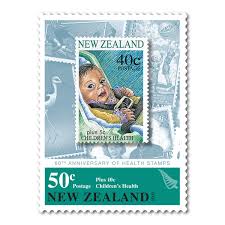De pesticiden chloorpyrifos en chloorpyrifos-methyl worden aangetroffen in 5,5 procent van alle onderzochte voedingsstalen in de EU. Dat blijkt uit gegevens van het Europese Voedselveiligheidsagentschap die in Knack staan. De komende maanden beslist Europa of de pesticiden van de markt moeten verdwijnen. Het pesticide chloorpyrifos wordt gebruikt om gewassen zoals kolen, fruit en groenten te beschermen tegen onder meer koolvliegen, aardrupsen en larven van langpootmuggen en kevers. Chloorpyrifos is actueel omdat de huidige EU-toelating voor het pesticide afloopt op 31 januari 2020.
De Europese Commissie buigt zich momenteel over de vraag of chloorpyrifos van de Europese markt moet verdwijnen. In acht EU-lidstaten is het pesticide sowieso al niet toegelaten: Litouwen, Slovenië, Denemarken, Duitsland, Finland, Zweden, Ierland en Letland. In België is chloorpyrifos enkel toegelaten voor professioneel gebruik en voor bepaalde teelten. Knack vroeg, in samenwerking met media uit zeven andere landen, aan de betrokken voedselveiligheidsagentschappen hoe vaak chloorpyrifos opduikt in onze voeding. Uit het resultaat blijkt dat de pesticiden gemiddeld gevonden worden in zowat 5,5 procent van alle geteste voedingswaren in Europa, onder meer in komijnzaad, citroenen, grapefruits, sinaasappels, mandarijnen, cherimoyas en koolrapen. De belangrijkste landen van herkomst zijn Laos, Cyprus, Tunesië, China en de VS.
Dé cruciale vraag is natuurlijk of chloorpyrifos gevaarlijk is voor de mens, schrijft Knack. Volgens de ngo Health and Environmental Alliance is er een “solide hoeveelheid wetenschappelijk bewijs voor de schadelijke effecten van chloorpyrifos op de gezondheid van de mens”. Meest kwetsbaar, aldus de ngo, zijn “kinderen, baby’s en baby’s in de baarmoeder, waarvan de hersenen zich nog steeds ontwikkelen”.
Knack vernam van één goedgeplaatste Commissie-bron die anoniem wil blijven dat “de Commissie de toelating niet zal verlengen omdat de gezondheidsbekommernissen heel duidelijk zijn”.
Bron: Het Laatste Nieuws, 17-06-19
https://www.hln.be/nieuws/binnenland/insecticide-blijkt-ook-in-fruit-en…

- Login om te reageren

The harmful effects of chlorpyrifos on children
Chlorpyrifos is a toxic pesticide, which poses significant risk to children’s health; a ban on chlorpyrifos is needed to protect our children and pregnant women. Low- level exposure to chlorpyrifos during childhood, infancy and pregnancy has been linked to lifelong effects such as autism, ADHD, developmental delays and lower IQ (V. Rauh et al., 2011; V. A. Rauh et al., 2006; R. M. Whyatt et al., 2005). Children are at increased risk of exposure to the harmful chemical by playing on the floor and in the dirt, putting things in their mouths and eating lots of fruits and vegetables (Bradman et al., 2005). Pregnant women are at increased risk of exposure, as chlorpyrifos is able to penetrate the placental barrier impacting the neurological devolvement of the fetus (Eskenazi et al., 2007). Individuals living in agricultural regions are at increased risk of exposure and suffer far worse consequences. The U.S. EPA found that agricultural communities face the greatest risk due to worker exposure and air contamination (U.S. Environmental Protection Agency, 2016c). Pregnant women living within one mile of agricultural regions treated with chlorpyrifos during their second trimester of pregnancy have children born with autism at three times the rate of the general population (Hertz-Picciotto et al., 2006). Exposure to chlorpyrifos can also occur through consumption of pesticide residues on food crops treated with chlorpyrifos. Studies have found that children who consume conventional diets have higher levels of chlorpyrifos in their bodies then those who consumed organic foods (Curl et al., 2003; MacIntosh et al., 2001). The U.S. EPA’s revised risk assessment states that due to exposure from pesticide food residues there are no safe levels of chlorpyrifos in drinking water, this is cause for concern as chlorpyrifos contamination has been detected in drinking water across all 50 states (U.S. Environmental Protection Agency, 2014, 2016b). Over 5 million pounds of chlorpyrifos is applied annually to agricultural fields across the Unites States, exposing countless individuals to unsafe levels of this toxic pesticide (U.S. Geological Survey, 2014).
SOURCE: Ruiz, Lucia M., "Exploring the Harmful Health Effects of Chlorpyrifos on Children: An Argument for Policy Reform" (2017).Master's Projects and Capstones. 529. https://repository.usfca.edu/capstone/529